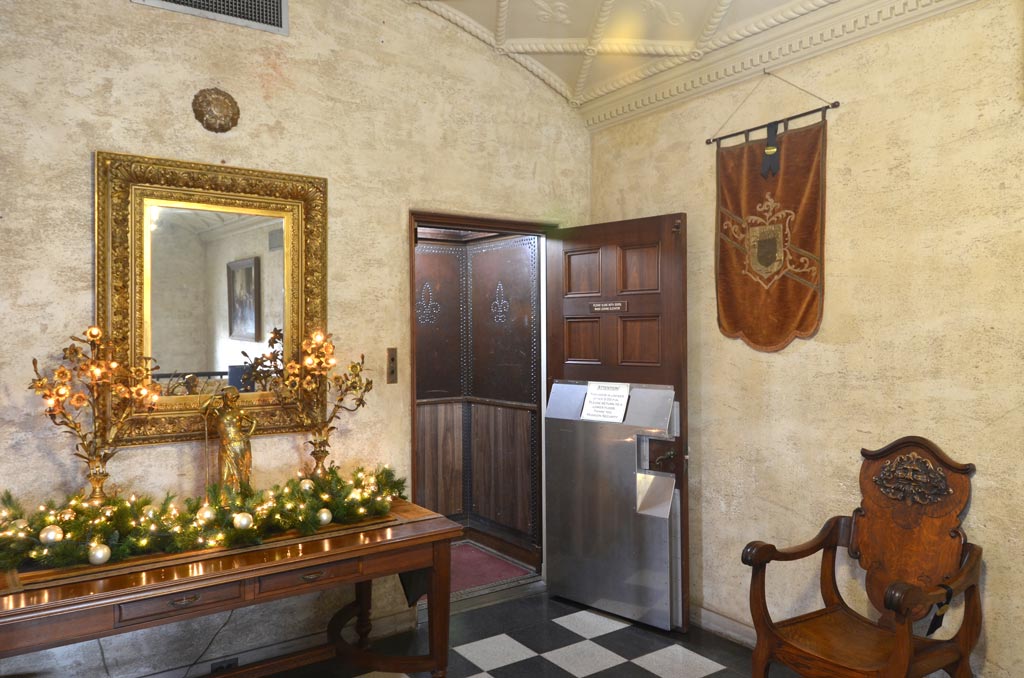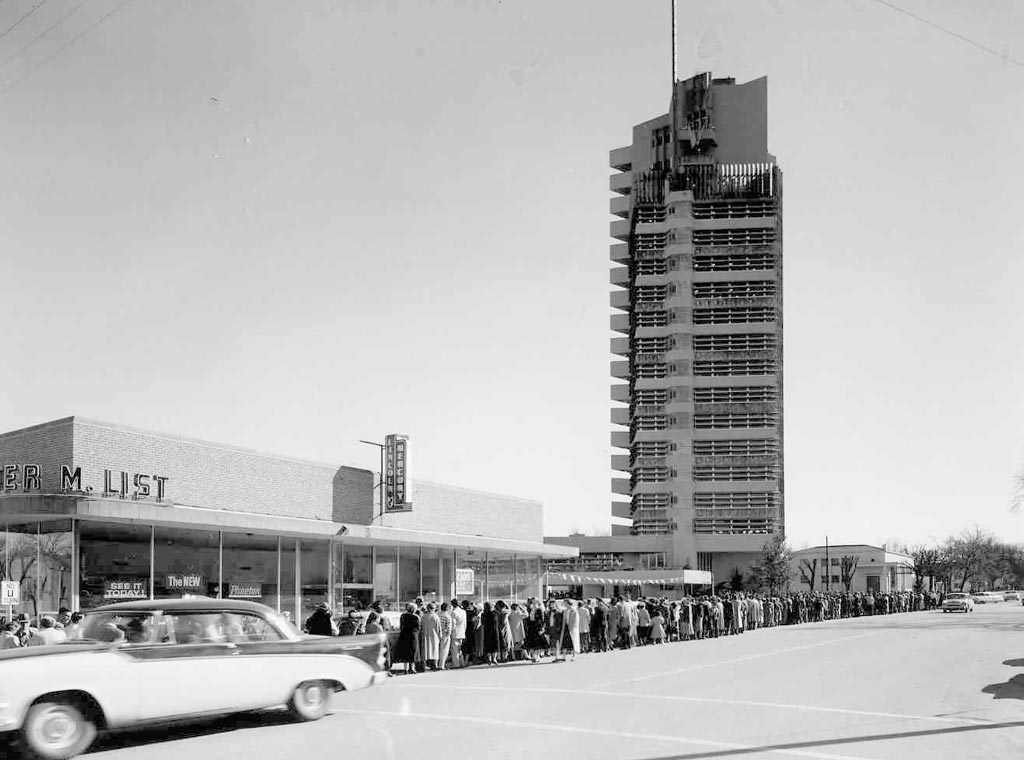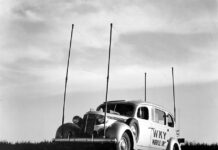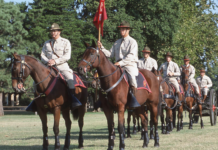When you step into most elevators today, gone are lavish interior designs, elaborately embellished outer doors, plush carpet and operators – elements of a time past.
Elevators now can travel as fast as 45 mph and have computerized controls, but some still have a little something from another era.
“When elevators are modernized, it is often only the control and safety systems that get replaced,” Tulsa author and historian Douglas Miller says. “Sometimes the cars, doors and cables are all original.”

Photo by Dan Morgan
The 320 South Boston Building in Tulsa, a 22-floor high-rise built in 1917, is an example of old meeting new. The 100-year-old Beaux Arts-style building’s elevators may have a few replacements, but the decorative design on the doors is a tribute to a long-ago era. There are other elevators throughout Oklahoma that also have something old and something new.
Marland Mansion
With fleur-de-lis imprinted buffalo leather walls, a wooden door and a brass safety gate, the elevator in the Marland Mansion in Ponca City has the same look and feel it did in 1926.
“You would think you were in a hotel in Paris in the 1920s, not a mansion in Ponca City, ” says David Keathly, executive director at E.W. Marland Mansion and Estate.
Marland, the former governor and oil baron, wanted a “Palace on the Prairie,” so he had the elevator installed when it was rare to see such a sight in a private residence, especially in Oklahoma, Keathly says.
The elevator, which fits only three adults, is one of the oldest in the state, yet with a few code updates and yearly maintenance, it runs like a dream for visitors to the mansion and museum.

Price Tower
Most elevators have rectangular floors, some are round or half-moon shaped, but the elevator at Price Tower Arts Center in Bartlesville is a little different. While the 1950s lifts don’t have extravagant interior designs, they catch your attention with their half-octagon shapes, part of the tower’s overall design theme of nature and geometry.
“Many of the shapes that are found in the building can be broken down into triangles … hence, why the shape of the elevator is half an octagon,” says Deshane Atkins, Price Tower curator.
The tower, known for its 30-, 60- and 90-degree angles, is famous because it was the only fully realized skyscraper that architect Frank Lloyd Wright designed.
The elevators are also in a peculiar location.
“They are placed in the center of the tower and the elevator shafts are the main support structure of the building,” Atkins says. “Wright used a cantilever structure to design the tower, which is very similar to a tree structure. The elevator shafts serve as the trunk of the building while the floors branch off.”
Philtower
The mechanics and other elements of the elevator may have been updated to meet building codes, but the heart of the Tulsa Philtower elevator still works.
Finished in 1928, the 24-story Philtower had six lifts with “elevator girls” as manual operators. Now with a modern interior and automated systems, three of the original six elevators are moved from floor-to-floor by a nearly 90-year-old motor, according to Richard Winton, a director at River City Development.
“The elevators were updated in the 1950s to be electro-mechanical and the cars were replaced at the same time,” Winton says. “When we renovated the upper stories into loft apartments about 10 years ago, the elevators were again modernized to meet current safety standards, but the original motor from 1928 is still in use.”
While elevators have made many changes over the years, many still use the original motor, he says.
























